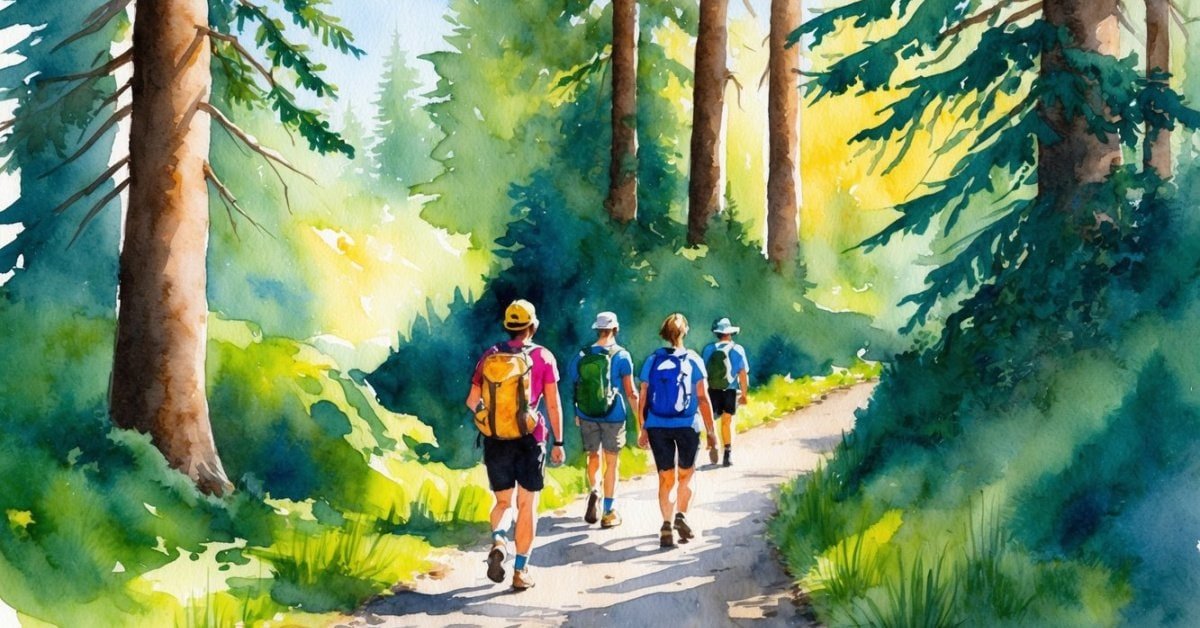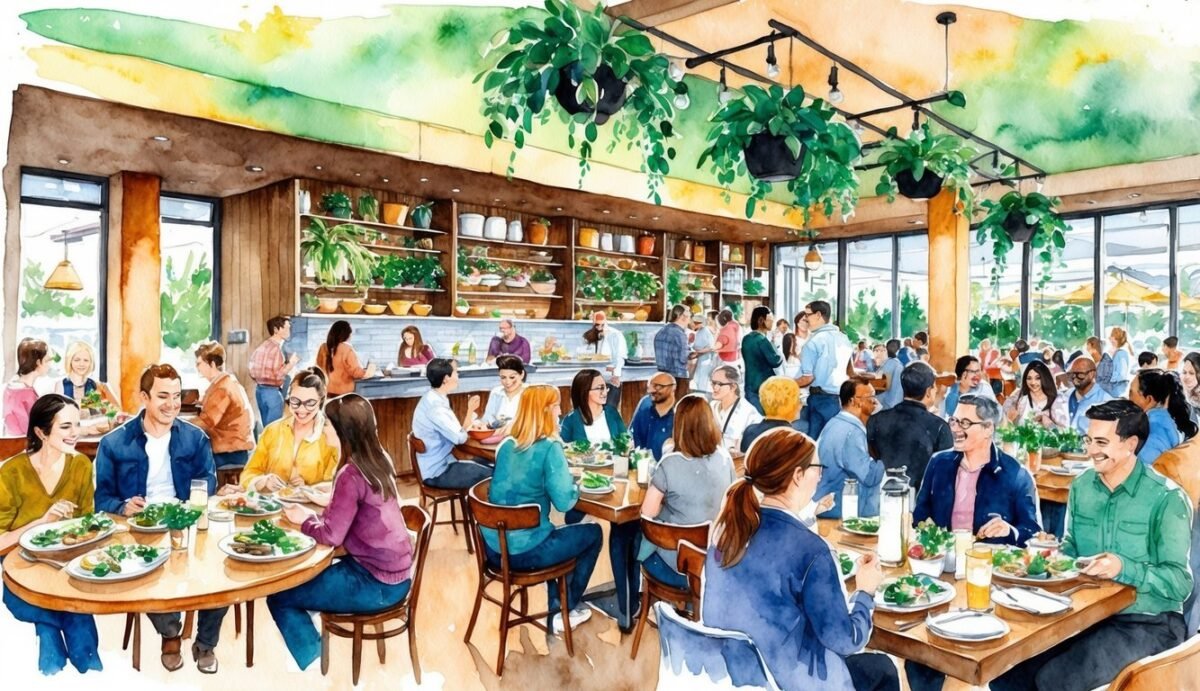Eugene, Oregon is called the Emerald City because of its lush, green landscapes and forests that surround the area. The city’s natural setting includes dense trees, grassy parks, and fern-filled trails.
This ongoing display of greenery inspired locals and visitors to give Eugene its bright nickname.

People visiting Eugene often notice how green it feels all year round. The abundant rainfall helps trees, grass, and plants thrive, making the city stand out in the Pacific Northwest as a real-life “emerald” spot.
Locals enjoy spending time outdoors. The forests around Eugene have been a key part of its identity since it was named the Emerald City in the mid-1900s.
For anyone curious about city nicknames, learning why Eugene is called the Emerald City adds an extra layer of appreciation for the place. The greenery is not just scenery—it’s a big part of community life, from outdoor events to well-loved parks.
Those who love nature and the outdoors will quickly see why this Oregon city stands out from the rest.
Origin Of The Name Emerald City

Eugene, Oregon is known as the Emerald City due to its lush surroundings and the long history behind its nickname. The story of how Eugene got this name connects local tradition, city growth, and its natural landscape.
Early References To Emerald City
The nickname “Emerald City” first became associated with Eugene in the late 1950s. Old city records and community stories say that locals started using the term around 1959 to describe the area’s natural beauty and vibrant community.
The nickname quickly gained acceptance and started appearing in local publications and marketing efforts.
Timeline
- 1959: “Emerald City” appears as a nickname for Eugene
- 1960s: Used in tourism and city branding
- Now: Part of Eugene’s identity
Eugene is not the only city called Emerald City. For example, Seattle has also adopted this name.
However, Eugene’s claim to the title centers on its own unique environment and community spirit. To this day, the nickname is used in events, sports teams, and local businesses.
For more details on Eugene’s adoption of “Emerald City,” see the entry on Eugene, Oregon.
Local Geography And Greenery
Eugene sits in Oregon’s Willamette Valley, surrounded by forests, rivers, and rolling hills. The region is famous for its mild, wet climate, which helps trees and plants grow almost year-round.
Many people notice the area’s green lawns, parks, and wooded neighborhoods when they visit.
Key Features That Make Eugene Green:
- Dozens of city parks and natural areas
- The Willamette River running through downtown
- Evergreen and flowering trees lining the streets
- Rainy climate supporting lush growth
When combined, these features give Eugene a fresh, vibrant look all year. This abundance of greenery explains why “Emerald City” fits Eugene so well.
Find out more about why Eugene is called Emerald City.
The Role Of Eugene’s Natural Environment

Eugene is often called the Emerald City because of its green spaces and thriving outdoors. Its natural environment, especially the Willamette River and a mild climate, makes the area stand out.
Influence Of The Willamette River
The Willamette River flows right through Eugene and is a big reason why the city has so much plant life. It gives water to local parks, trees, and gardens.
This river also supports wildlife, such as birds, fish, and deer, that live around its banks. Locals and visitors use the river for fishing, kayaking, and walking along its many green paths.
The river’s presence makes parks possible all over Eugene. These public spaces are full of lawns and forested areas, which help the city stay green year-round.
Without the Willamette River, Eugene would not have the same rich scenery. The river makes it possible for the city to offer so many outdoor activities and green retreats for everyone to enjoy.
This has led people to connect the area with the word “emerald,” which means bright green.
Climate And Lush Landscape
Eugene’s climate also helps keep it looking green. The city gets regular rainfall, especially during fall, winter, and spring.
This steady moisture lets grass, shrubs, and tall trees thrive across the area. The weather is mild most of the year, so plants do not dry out or wither as often as in drier places.
Lawns, gardens, and wild forest patches stay bright and full. Eugene’s many parks are filled with Douglas-firs, maples, and ferns, giving the city its famous lush look.
The mix of rain, gentle temperatures, and river water creates a perfect place for nature to grow. This green setting shapes the identity of Eugene and draws outdoor fans from everywhere.
Community And Cultural Connections

Many of Eugene’s most famous events and social life revolve around its green landscapes and the people who live there. Local institutions and annual traditions help shape why the city is known as the “Emerald City.”
University Of Oregon’s Impact
The University of Oregon is a major part of life in Eugene. Its campus has tree-lined paths and large green spaces that highlight the city’s love for nature.
Students, faculty, and staff are involved in projects that support local parks, sustainability, and the arts. A lot of the city’s energy comes from the university’s events.
For example, football games at Autzen Stadium bring the whole town together. The school has helped Eugene earn its nickname by focusing on green projects and supporting environmental research.
Many visitors come to Eugene to see the university’s beautiful grounds. The connection between the school and the city can be seen in how they both promote outdoor activities, the arts, and taking care of the environment.
More about this can be found on the Eugene, Oregon Wikipedia page.
Local Traditions And Festivals
Eugene hosts many events and festivals throughout the year that focus on community and the outdoors. The Oregon Country Fair is a popular summer event that celebrates music, arts, and nature.
It draws people from all over the state. Art in the Vineyard is another festival where people enjoy live music, art, and the outdoors surrounded by greenery.
The Saturday Market is open every weekend from spring to fall and features local food, crafts, and live shows in a park-like setting. These traditions help keep the city’s community spirit alive.
They give Eugene its friendly, green, and creative vibe, supporting the city’s reputation as the “Emerald City” balanced between art and outdoor living. See more about how these local events shaped the city’s names in From Mudhole to Emerald City: The Many Names of Eugene.
Regional Context And Comparisons

Eugene’s identity as the Emerald City connects strongly to its lush surroundings and unique regional relationships. These links affect not just Eugene, but also Lane County and towns like Junction City.
Lane County’s Contribution
Lane County’s natural environment is a big reason Eugene is called the Emerald City. The county is known for its green forests, rivers, and landscapes, especially during most of the year when rain keeps everything vibrant.
Many parks are nearby, including Alton Baker Park and Spencer Butte. These areas, with tall trees and mossy paths, give Eugene and the whole county a fresh, green look.
The public often uses “Emerald City” or even “Emerald Empire” to talk about both Eugene and the larger Lane County region. Local government, tourism, and businesses use these names to promote the area’s natural beauty and outdoor activities.
Nearby Towns: Junction City
Junction City lies about 15 miles north of Eugene. It isn’t called the Emerald City, but its close location means it shares much of the same climate and green scenery.
The fields around Junction City are used for agriculture. In spring and summer, these fields add even more green to the region.
Junction City is also known for watermelon and grass seed, contributing to the area’s landscape. Travelers moving between Junction City and Eugene will notice how the landscape stays lush and green, helping support Eugene’s reputation as the Emerald City.
This strong green character links Junction City and Eugene, even if only Eugene has the nickname.
Travel And Accessibility

Eugene, Oregon is well connected by highways and public transit. Travelers find it easy to get around both the city and surrounding areas thanks to these important routes and options.
Major Highways: McKenzie Highway
The McKenzie Highway (Oregon Route 126) is a main route running east from Eugene through beautiful landscapes and forests. It leads visitors toward the McKenzie River and the Cascades.
The highway is popular for its scenic views, making it a favorite drive for tourists and locals. In spring and summer, drivers will see green hills and forests that help give Eugene its name as the “Emerald City.”
The route also connects towns and recreational areas along the McKenzie River, including fishing spots, campgrounds, and hiking trails. In winter, sections of the McKenzie Highway can close due to snow, so travelers should check conditions before starting their trip.
The road is well signposted, making navigation easy. This highway helps link Eugene with eastern Oregon and is a major access route to outdoor destinations.
Transportation Links
Eugene has a bus system called LTD (Lane Transit District) that covers much of the city and nearby towns. Many riders use LTD to get to work, school, and events.
There are wheelchair-accessible buses available for those who need them. For those traveling long distances, Amtrak serves the Eugene Station with trains going north to Portland and south toward California.
Eugene’s airport offers flights to several major cities, making flying in and out simple. Bike paths and sidewalks are common, making it easy to get around without a car.
These transportation options help make Eugene more accessible for people with different needs. Local guides highlight how listening to the community’s needs has shaped the accessibility of Eugene.
Eugene’s Lasting Reputation As The Emerald City

The nickname “Emerald City” continues to shape Eugene’s cultural identity and influences how both locals and visitors see the area. The name is tied to the city’s lush landscapes, its strong community pride, and how it is featured in media and tourism promotions.
Modern Identity And Local Pride
People in Eugene embrace the “Emerald City” nickname as a symbol of their green surroundings and outdoor lifestyle. Residents often highlight the natural beauty of the city, from tall trees to expansive parks.
Many community events, local businesses, and organizations use the name to show off their connection to the lush, green environment.
The “Emerald City” label also helps unite the community. It is often seen on merchandise, banners, and at festivals.
As Eugene’s official motto says, it is known as “A Great City for the Arts and Outdoors.” The nickname fits well with this image.
The pride in local scenery, especially the greenery that makes the city special, is clear in the way residents speak about their home.
Emerald City In Media And Tourism
Eugene’s identity as the “Emerald City” is used by tourism boards, local media, and event organizers to attract people to the area.
Tourism campaigns often call attention to the city’s green spaces and trails, with the nickname making Eugene stand out among other Oregon destinations.
The nickname appears in brochures, online guides, and travel articles to highlight the city’s beautiful parks and nature spots.
Media references to Eugene as the “Emerald City” have appeared on television and in newspapers, bringing more attention to the area’s unique charm.
Even works of fiction and public access shows have made use of this nickname, embedding it further in Eugene’s public image.
Visitors regularly come looking for the forests, gardens, and city parks that gave Eugene its well-known green nickname, as described on Wikipedia.





